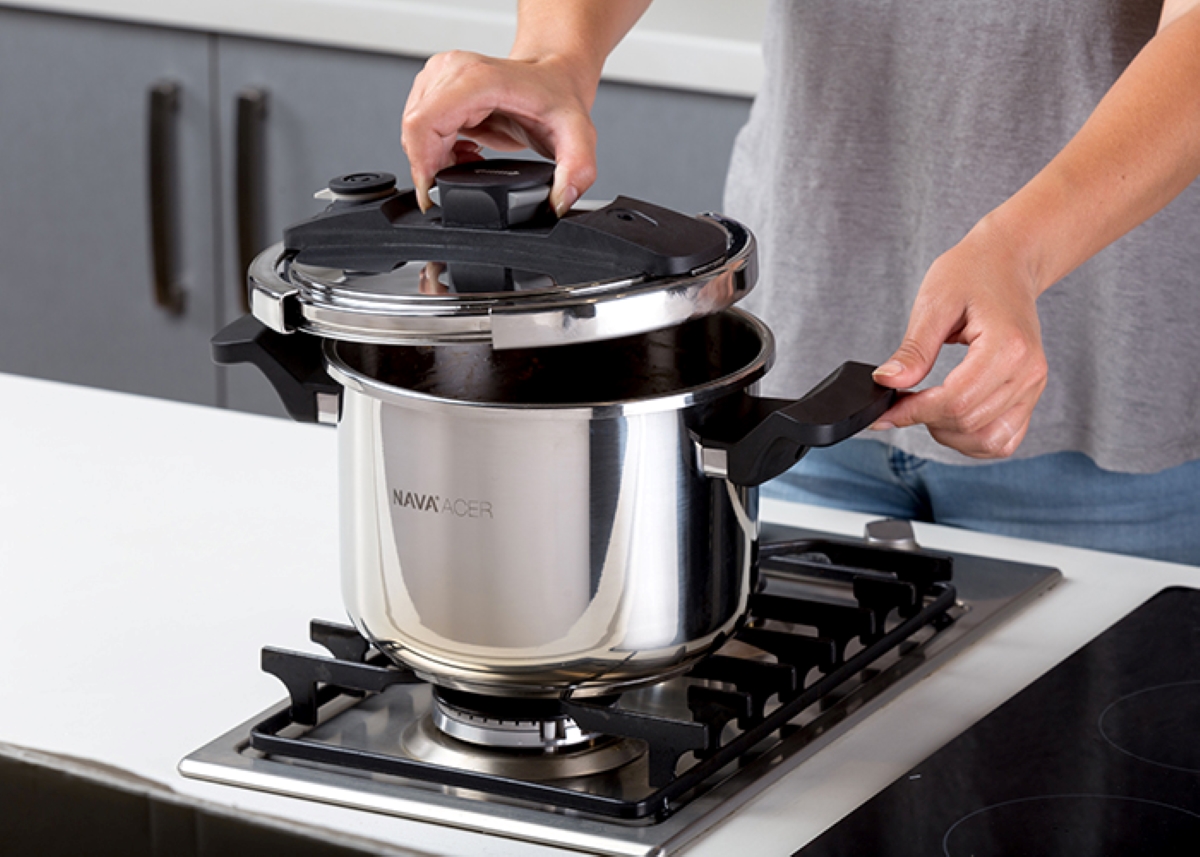
How does the pressure cooker work and how can it prepare our food so quickly? Is it a healthy way of cooking and when did it first appear?
The history of the pressure cooker:
From time immemorial it has been a common cooking tactic for the cooks of that time to close their pot tightly with a little dough around or put a weight on the lid. The purpose was to close the container airtight and not to let air and liquids escape.
The first attempt to build a pressure cooker was made in 1979 by the French mathematician and physicist Denis Papin. Of course, in the first years of its construction, its use was extremely dangerous, as the compressed air and water vapor led to a small "explosion" of the utensil. The need arose for a safety and decompression mechanism, so the safety valve arose.
From that point on, the design evolved and in 1915 it was officially named the pressure cooker. In 1925 it was first sold in Germany and in 1939 industrial pressure cookers began to be sold in New York. Because it was something completely innovative, some considered it magical, and the characteristic whistle intensified this view.
The pressure cooker has two main advantages: the cooking speed and the healthy cooking. In other words, it is a must-have cooking utensil for every home!
Here's everything you need to know about the pressure cooker, the modern utensil with which you cook fast and delicious food!
Cooking in the pot is 70% faster than conventional cooking techniques ... That alone is enough to become the favorite utensil in the kitchen! Equally important is the lower energy consumption and therefore the less waste of money and the smaller energy footprint. Cooking in a pressure cooker consumes minimal energy. This is because as soon as it reaches the desired pressure, you lower the fire to a minimum. In addition the total preparation time is much shorter... Sounds tempting right?
So far we have talked about speed, economy, sustainability and a positive impact on the environment. But what about healthy cooking?
Myth: Cooking in a pressure cooker is not healthy
There is a view that due to the cooking speed and high cooking temperatures the food is not as healthy compared to the simple casserole.
Truth: It is healthy to cook in a pressure cooker
Of course, this is not the case! Cooked food and its ingredients do not come into contact with air as the utensil is hermetically sealed, so that the nutrients are preserved even better.
Simply, steaming under pressure ensures healthier and tastier food, prepared in less time and with less energy consumption! Sounds perfect, because it is!
Of course there is a little phobia around the use of the pressure cooker and many are reluctant to use it… "What happens when a pressure cooker explodes?" you might think… NAVA pressure cookers are designed to provide complete safety, with an exclusive safety system for safe cooking. It is therefore a pity that you do not use this easy and effective to use cookware, which is nothing more than a pressure cooker.
"How do I cook with the pressure cooker?"
1) Add the ingredients and the corresponding water to the pressure cooker (minimal compared to the simple casserole). If the food needs to be sautéed, sauté it and then close the lid of the pressure cooker tightly.
2) Raise a high temperature so the pressure cooker enters the process of creating pressure. When it reaches the appropriate pressure the oxygen separates rises to the top of the pressure cooker, and is released by the safety valve. The pressure cooker then seals and alerts you to lower the temperature. From that moment on, you start and count the cooking time based on the instructions of each utensil and the recipe.
3) Once the process is completed, following the instructions of the utensil, wait for the pressure to come down and proceed to unseal the pot. Read the instructions for use in detail.
What to watch out for:
In our online store you will find the NAVA Pressure Cookers to choose the one that meets your need! Discover the new "Funtzio" low pressure cooker made of cast aluminum with non-stick stone coating.